Effect of Coastal Erosion on Storm Surge: A Case Study in the Southern Coast of Rhode Island
Abstract
:1. Introduction
2. Data
3. Coastal Erosion Scenarios
4. Numerical Modeling
5. Results
5.1. Model Skill Assessment
5.2. Propagation of Tides/Storm Surge in Coastal Ponds; Effect of Coastal Inlets
5.3. Effect of Erosion on Storm Surge
6. Discussion
7. Conclusions
- The results showed that erosion of dunes has more effect on flooding extent compared with retreat of shorelines.
- For storms which do not overtop or erode the coastal dunes, the inlets of coastal ponds can significantly decrease the storm surge elevation. This can be explained using the concepts of inlet-basin hydrodynamics. However, for very extreme storms such as a 100-year event where coastal dunes are overtopped, and low-lying areas are flooded, the flooding extent did not significantly change.
- Assuming complete erosion of the dunes and for the scenario of Hurricane Bob, simulations showed a more than 200% increase in the flooding extent. Several sources of uncertainty can affect these estimations. For instance, in many cases, dunes are partially eroded. Coupled hydrodynamic and morphodynamic models which can simulate dunes erosion more accurately, can lead to more realistic estimations.
- Numerical surge models which do not fully resolve coastal inlets (e.g., NACCS model in RI) lead to significant errors in the prediction of surge in coastal ponds. Accurate bathymetric and topographic measurement of coastal inlets is essential for storm surge modeling in areas with inlet-basin systems.
Acknowledgments
Author Contributions
Conflicts of Interest
References
- Wahl, T.; Jain, S.; Bender, J.; Meyers, S.D.; Luther, M.E. Increasing risk of compound flooding from storm surge and rainfall for major US cities. Nat. Clim. Chang. 2015, 5, 1093–1097. [Google Scholar] [CrossRef]
- Parris, A.; Bromirski, P.; Burkett, V.; Cayan, D.R.; Culver, M.; Hall, J.; Horton, R.; Knuuti, K.; Moss, R.; Obeysekera, J.; et al. Global Sea Level Rise Scenarios for the United States National Climate Assessment; NOAA Technical Report OAR CPO-1; NOAA: Silver Spring, MD, USA, 2012. [Google Scholar]
- Roelvink, D.; Reniers, A.; van Dongeren, A.; de Vries, J.V.T.; McCall, R.; Lescinski, J. Modelling storm impacts on beaches, dunes and barrier islands. Coast. Eng. 2009, 56, 1133–1152. [Google Scholar] [CrossRef]
- McCall, R.T.; de Vries, J.V.T.; Plant, N.; van Dongeren, A.; Roelvink, J.; Thompson, D.; Reniers, A. Two-dimensional time dependent hurricane overwash and erosion modeling at Santa Rosa Island. Coast. Eng. 2010, 57, 668–683. [Google Scholar] [CrossRef]
- Kurum, M.O.; Edge, B.; Mitasova, H.; Overton, M. Effects of coastal landform changes on storm surge along the Hatteras Island breach area. Coast. Eng. Proc. 2011, 1, 25. [Google Scholar] [CrossRef]
- Boothroyd, J.; Hollis, R.; Oakley, B.; Henderson, R. Shoreline Change from 1939–2014, Washington County, Rhode Island. 1:2,000 scale, 45 maps; Technical Report; Rhode Island Geological Survey: Kingston, RI, USA, 2016. [Google Scholar]
- Woods Hole Group. Wave Tide and Current Data Collection Contract No. W912WJ-09-D-0001-0026; US Army Corps of Engineers: New England District, MA, USA, 2012. [Google Scholar]
- Cialone, M.A.; Massey, T.C.; Anderson, M.E.; Grzegorzewski, A.S.; Jensen, R.E.; Cialone, A.; Mark, D.J.; Pevey, K.C.; Gunkel, B.L.; McAlpin, T.O. North Atlantic Coast Comprehensive Study (NACCS) Coastal Storm Model Simulations: Waves and Water Levels; Technical Report, DTIC Document; The U.S. Army Engineer Research and Development Center: Vicksburg, MS, USA, 2015. [Google Scholar]
- Hashemi, M.R.; Spaulding, M.L.; Shaw, A.; Farhadi, H.; Lewis, M. An efficient artificial intelligence model for prediction of tropical storm surge. Nat. Hazards 2016, 82, 471–491. [Google Scholar] [CrossRef]
- Luettich, R., Jr.; Westerink, J.; Scheffner, N.W. ADCIRC: An Advanced Three-Dimensional Circulation Model for Shelves, Coasts, and Estuaries; Report 1. Theory and Methodology of ADCIRC-2DDI and ADCIRC-3DL. Technical Report, DTIC Document; US Army Corps of Engineers: Washington DC, USA, 1992. [Google Scholar]
- Smith, J.M.; Sherlock, A.R.; Resio, D.T. STWAVE: Steady-State Spectral Wave Model User’s Manual for STWAVE, version 3.0; Technical Report, DTIC Document; US Army Corps of Engineers: Washington DC, USA, 2001. [Google Scholar]
- Dietrich, J.C.; Tanaka, S.; Westerink, J.J.; Dawson, C.; Luettich, R., Jr.; Zijlema, M.; Holthuijsen, L.H.; Smith, J.; Westerink, L.; Westerink, H. Performance of the unstructured-mesh, SWAN + ADCIRC model in computing hurricane waves and surge. J. Sci. Comput. 2012, 52, 468–497. [Google Scholar] [CrossRef]
- Westerink, J.J.; Luettich, R.A.; Feyen, J.C.; Atkinson, J.H.; Dawson, C.; Roberts, H.J.; Powell, M.D.; Dunion, J.P.; Kubatko, E.J.; Pourtaheri, H. A basin-to channel-scale unstructured grid hurricane storm surge model applied to southern Louisiana. Mon. Weather Rev. 2008, 136, 833–864. [Google Scholar] [CrossRef]
- Mukai, A.Y.; Westerink, J.J.; Luettich, R.A., Jr.; Mark, D. Eastcoast 2001, a Tidal Constituent Database for Western North Atlantic, Gulf of Mexico, and Caribbean Sea; Technical Report, DTIC Document; US Army Corps of Engineers: Washington DC, USA, 2002. [Google Scholar]
- Pawlowicz, R.; Beardsley, B.; Lentz, S. Classical tidal harmonic analysis including error estimates in MATLAB using T_TIDE. Comput. Geosci. 2002, 28, 929–937. [Google Scholar] [CrossRef]
- US Army Corps of Engineers. Hydrodynamics of Tidal Inlets, EM 1110-2-1100 ed.; US Army Corps of Engineers: Washington DC, USA, 2008. [Google Scholar]
- Wong, K.C.; DiLorenzo, J. The response of Delaware’s inland bays to ocean forcing. J. Geophys. Res. Oceans 1988, 93, 12525–12535. [Google Scholar] [CrossRef]
- Chuang, W.S.; Swenson, E.M. Subtidal water level variations in Lake Pontchartrain, Louisiana. J. Geophys. Res. Oceans 1981, 86, 4198–4204. [Google Scholar] [CrossRef]
- Aretxabaleta, A.L.; Butman, B.; Ganju, N.K. Water level response in back-barrier bays unchanged following Hurricane Sandy. Geophys. Res. Lett. 2014, 41, 3163–3171. [Google Scholar] [CrossRef]
- Woodruff, J.D.; Irish, J.L.; Camargo, S.J. Coastal flooding by tropical cyclones and sea-level rise. Nature 2013, 504, 44–52. [Google Scholar] [CrossRef] [PubMed]
- Sweet, W.V. Sea Level Rise and Nuisance Flood Frequency Changes around the United States; NOAA Technical Report NOS CO-OPS 073; National National Oceanic and Atmospheric Administration: Silver Spring, MD, USA, 2014. [Google Scholar]
- Judge, E.K.; Overton, M.F.; Fisher, J.S. Vulnerability indicators for coastal dunes. J. Waterw. Port Coast. Ocean Eng. 2003, 129, 270–278. [Google Scholar] [CrossRef]
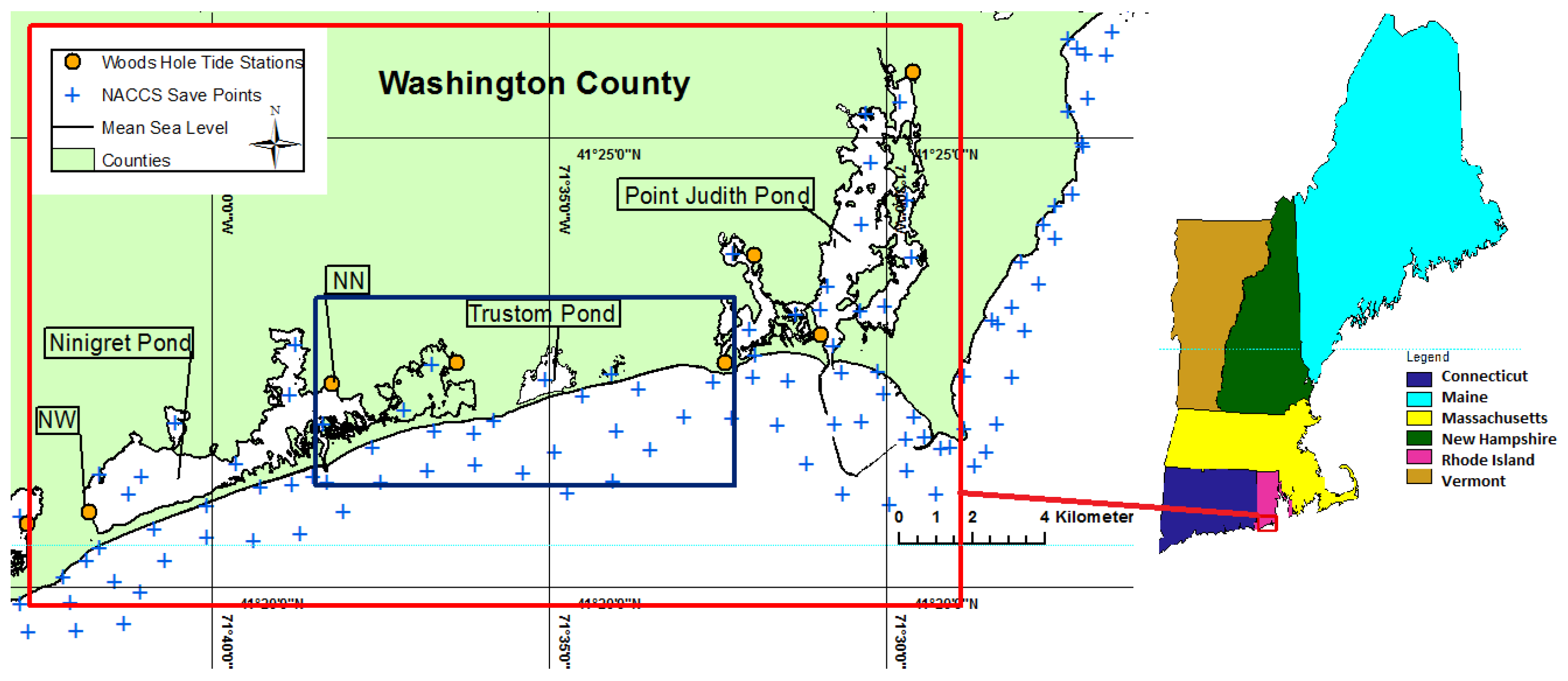

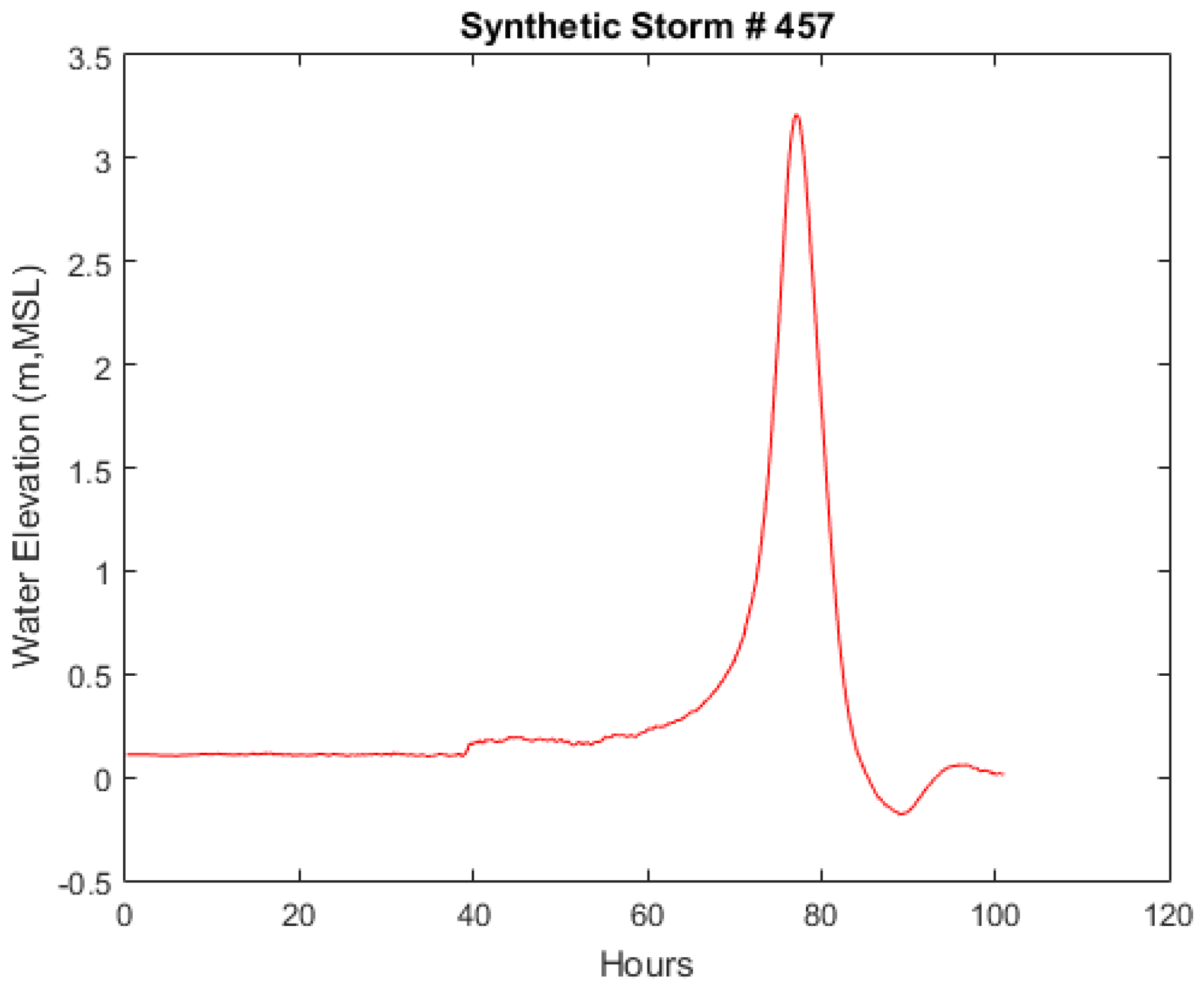
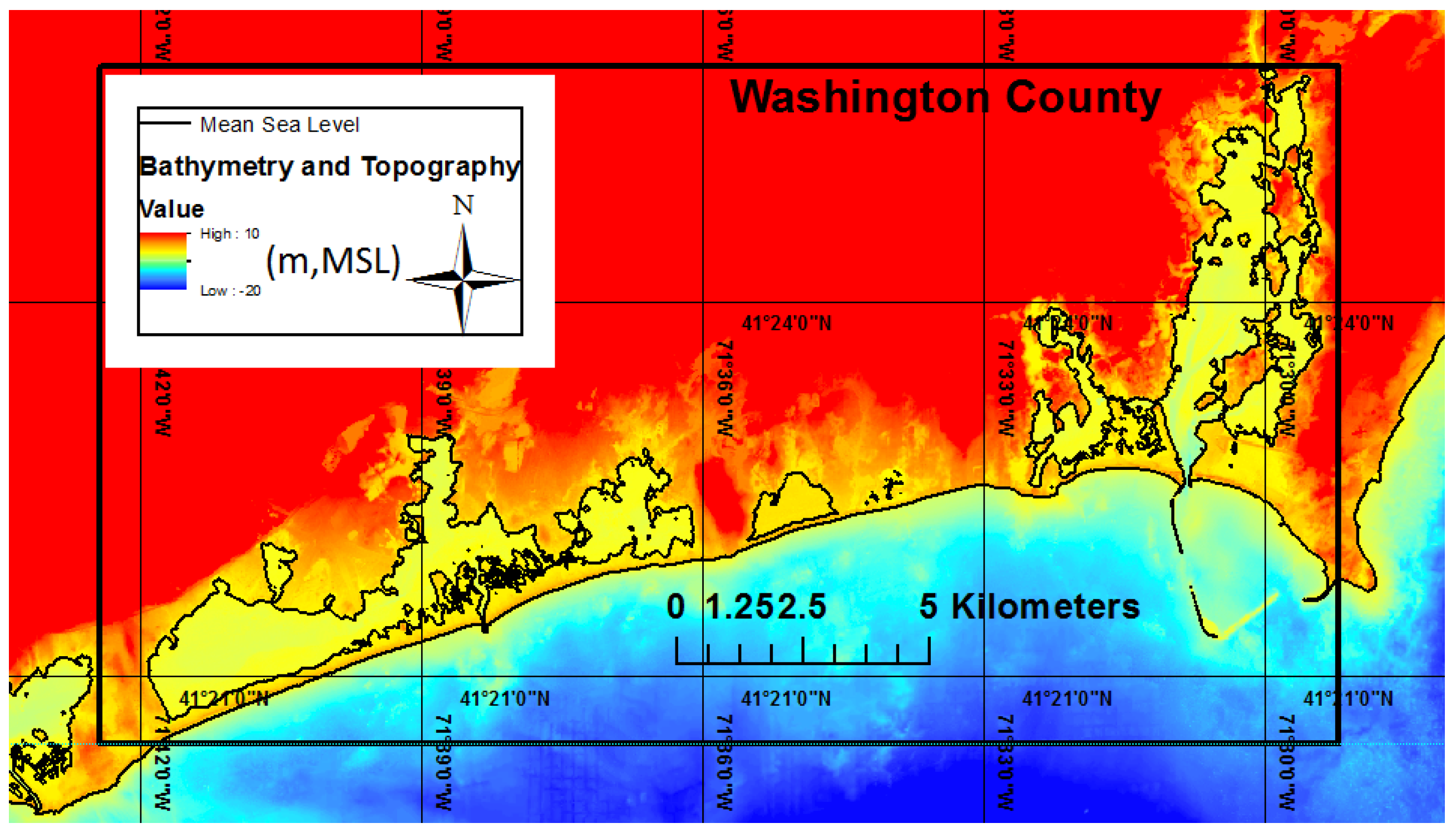

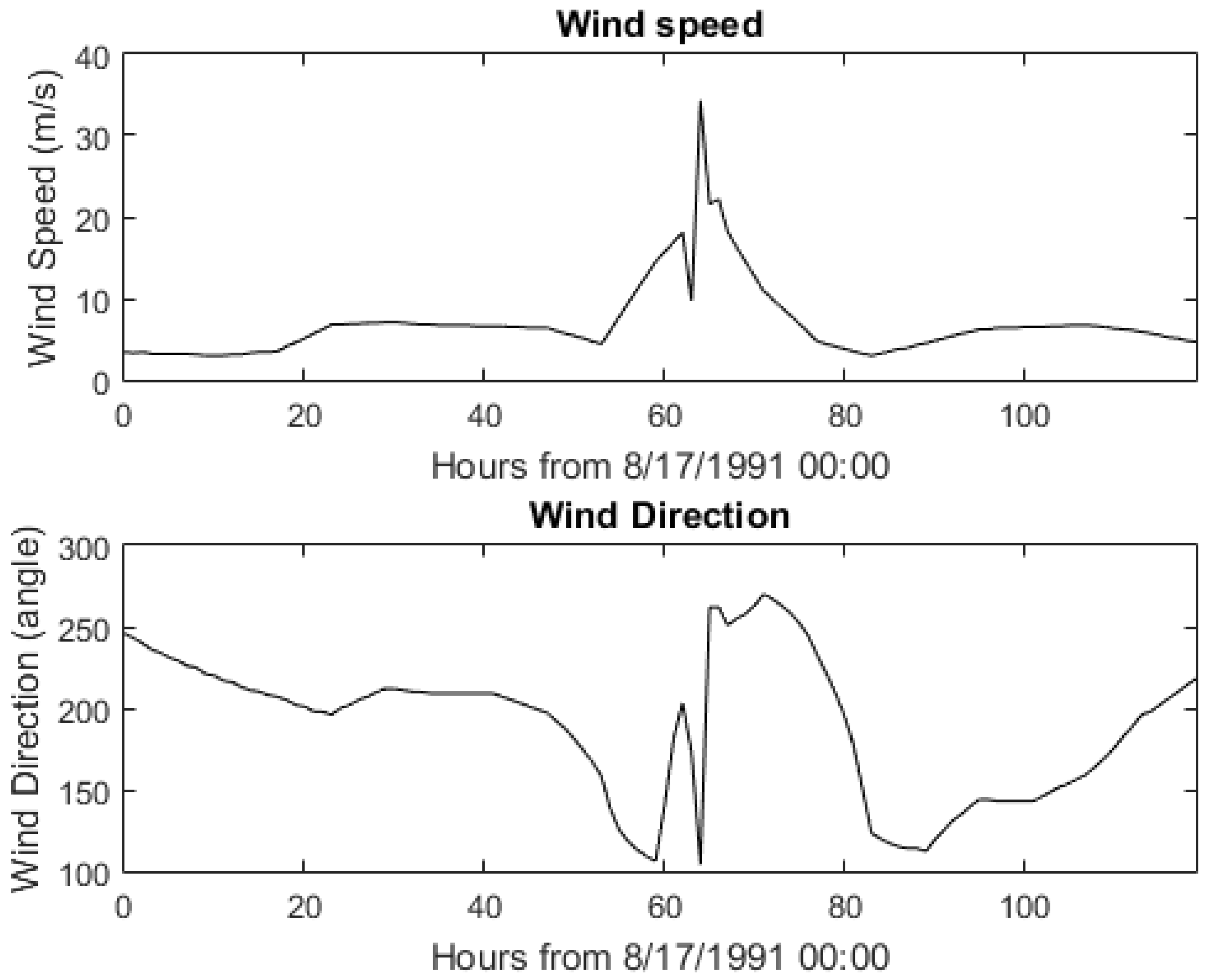
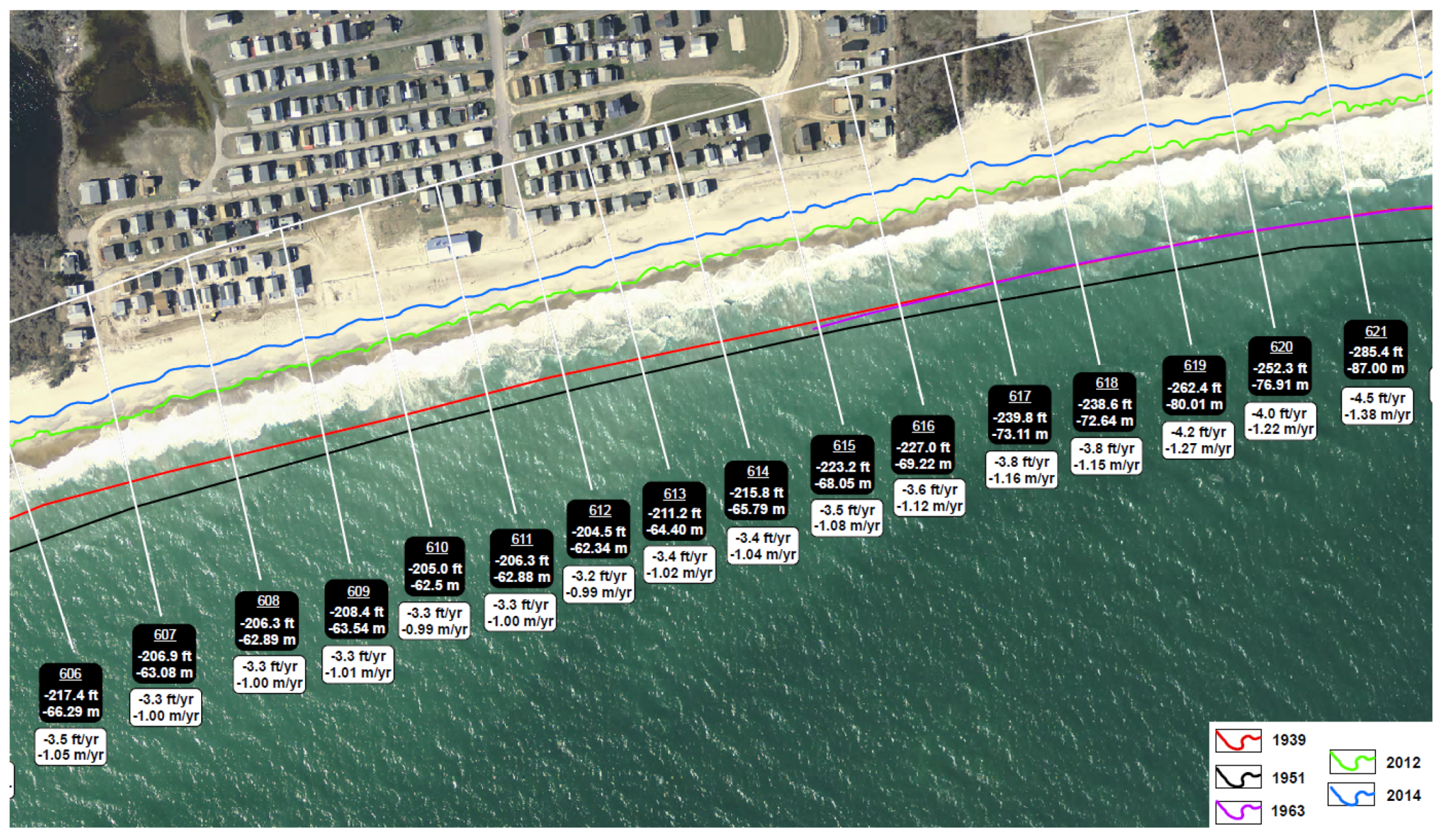

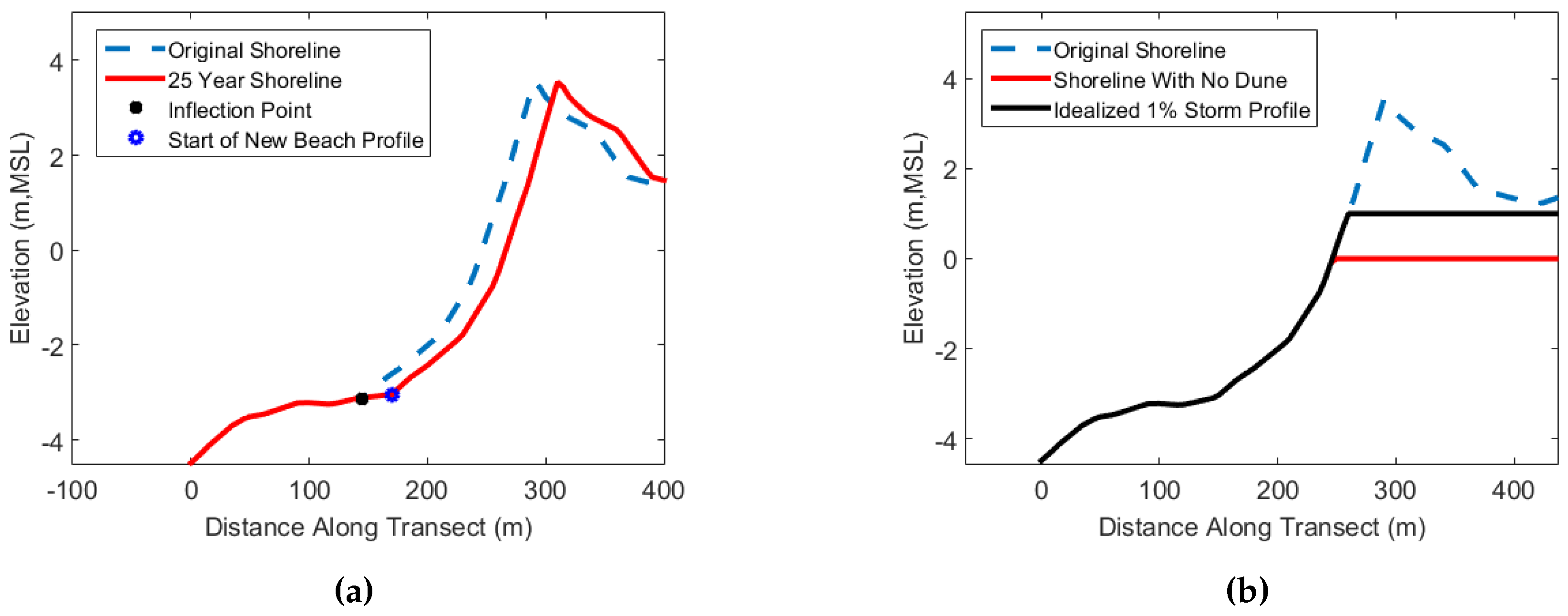
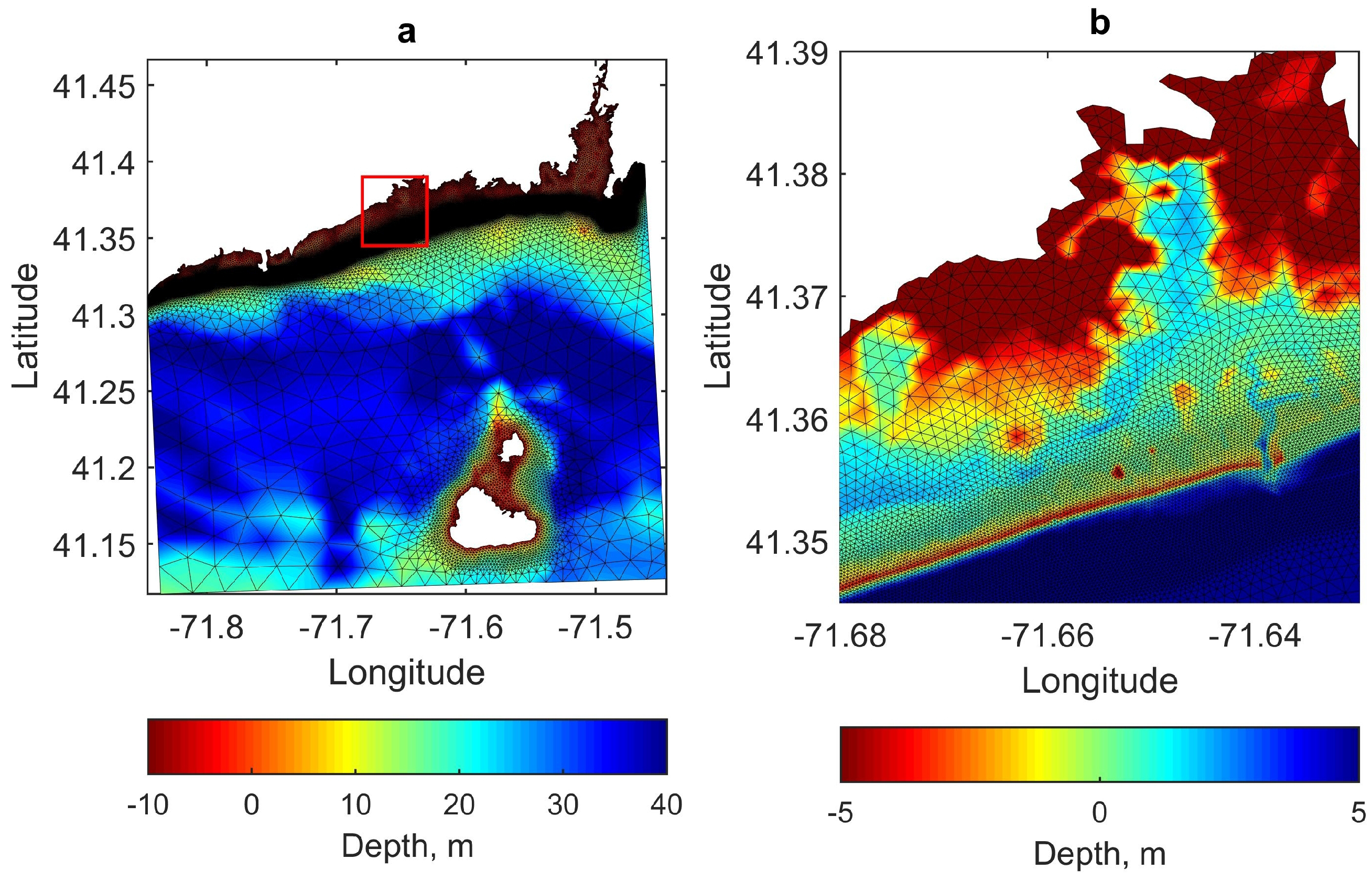
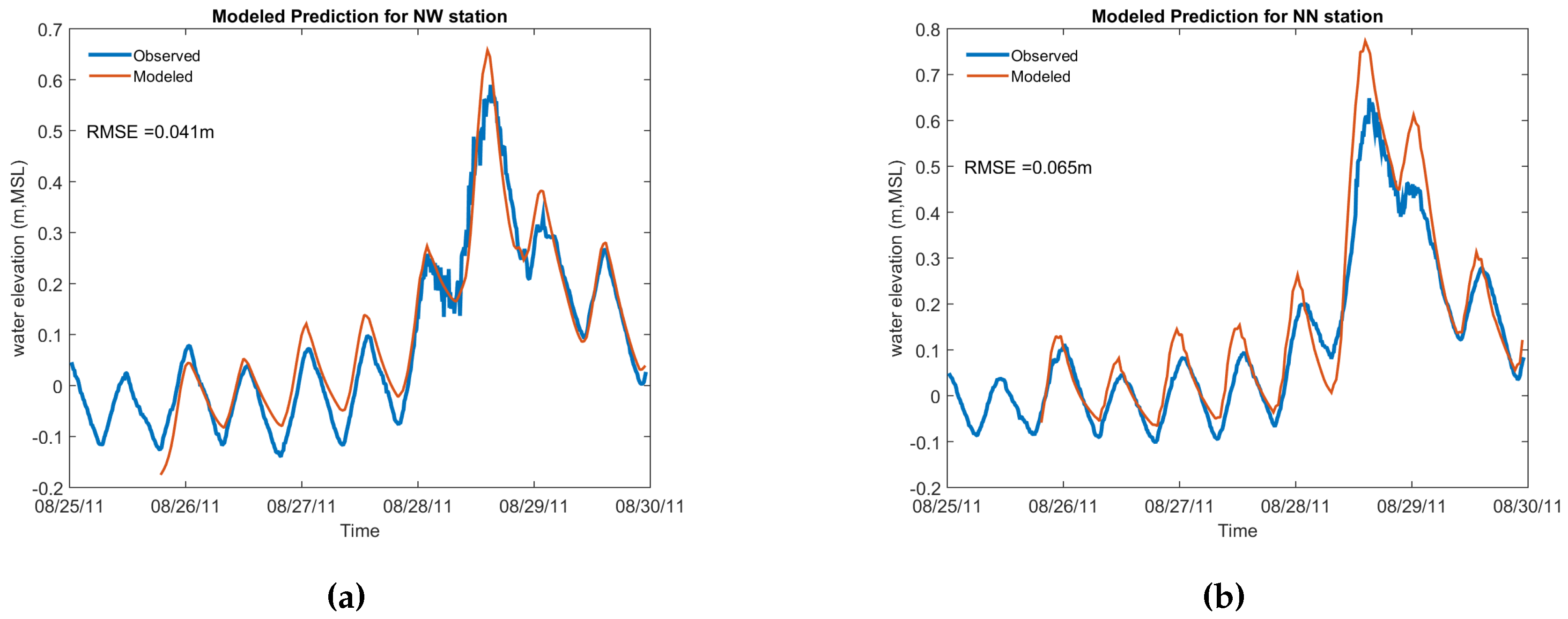
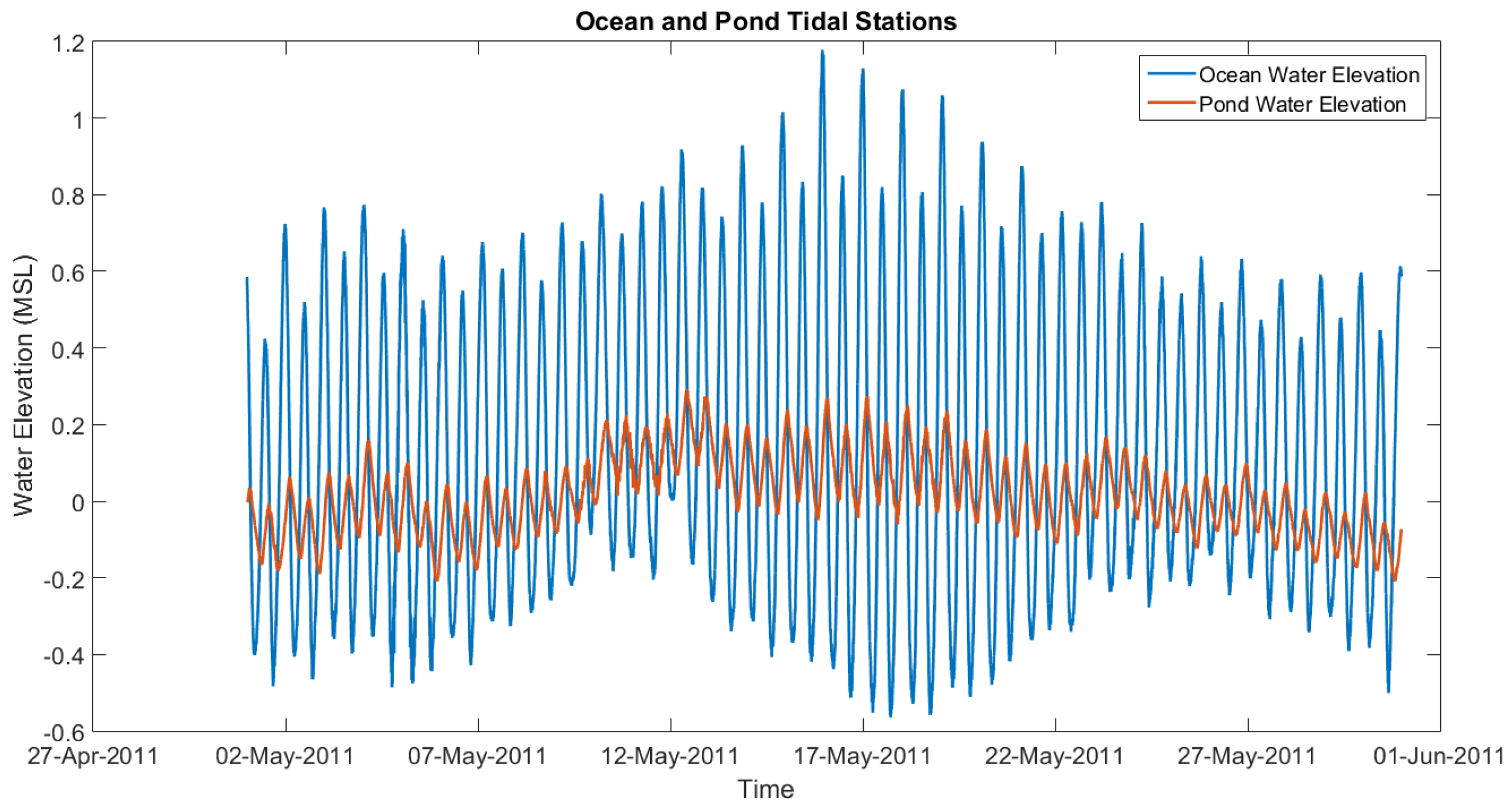

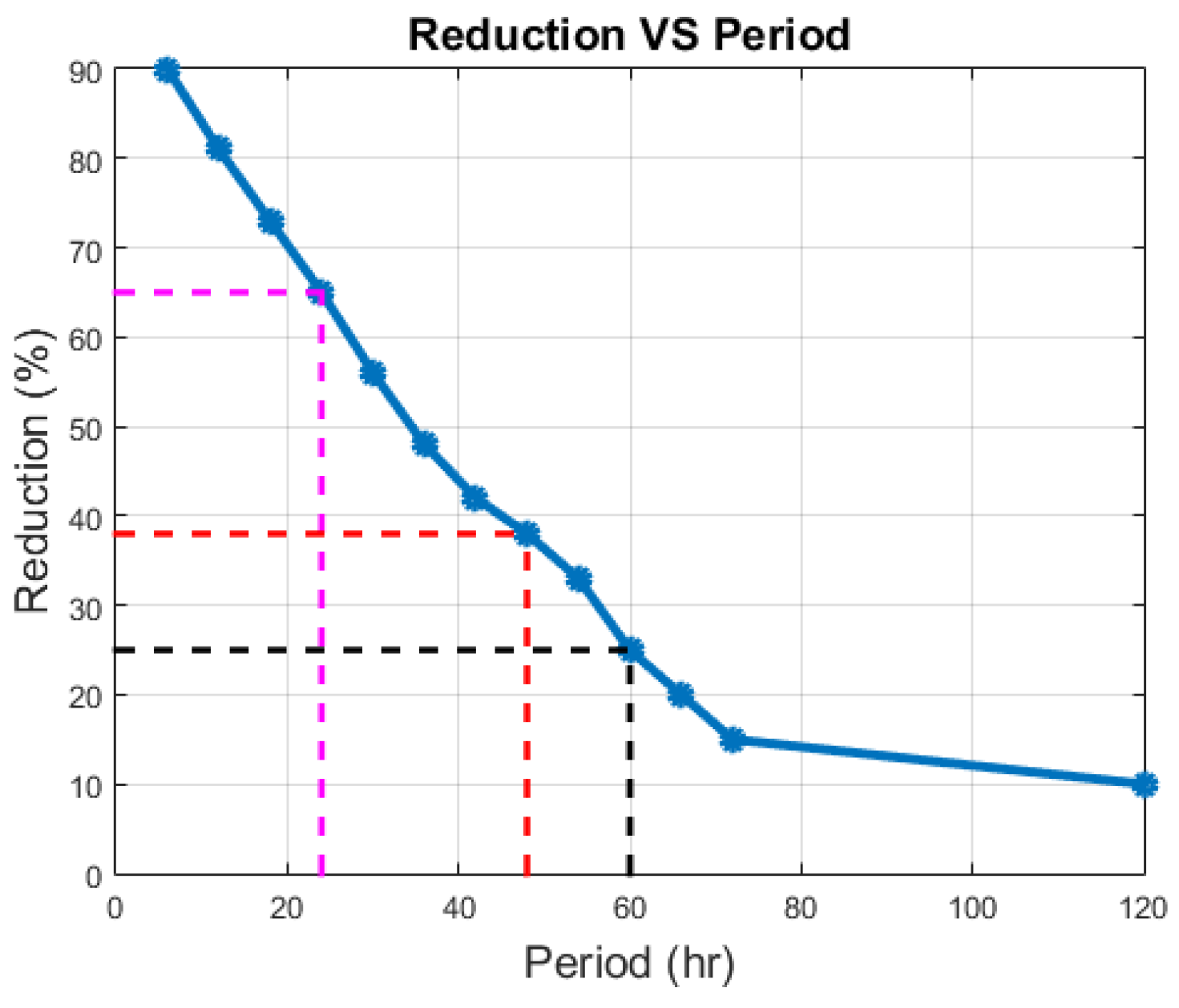
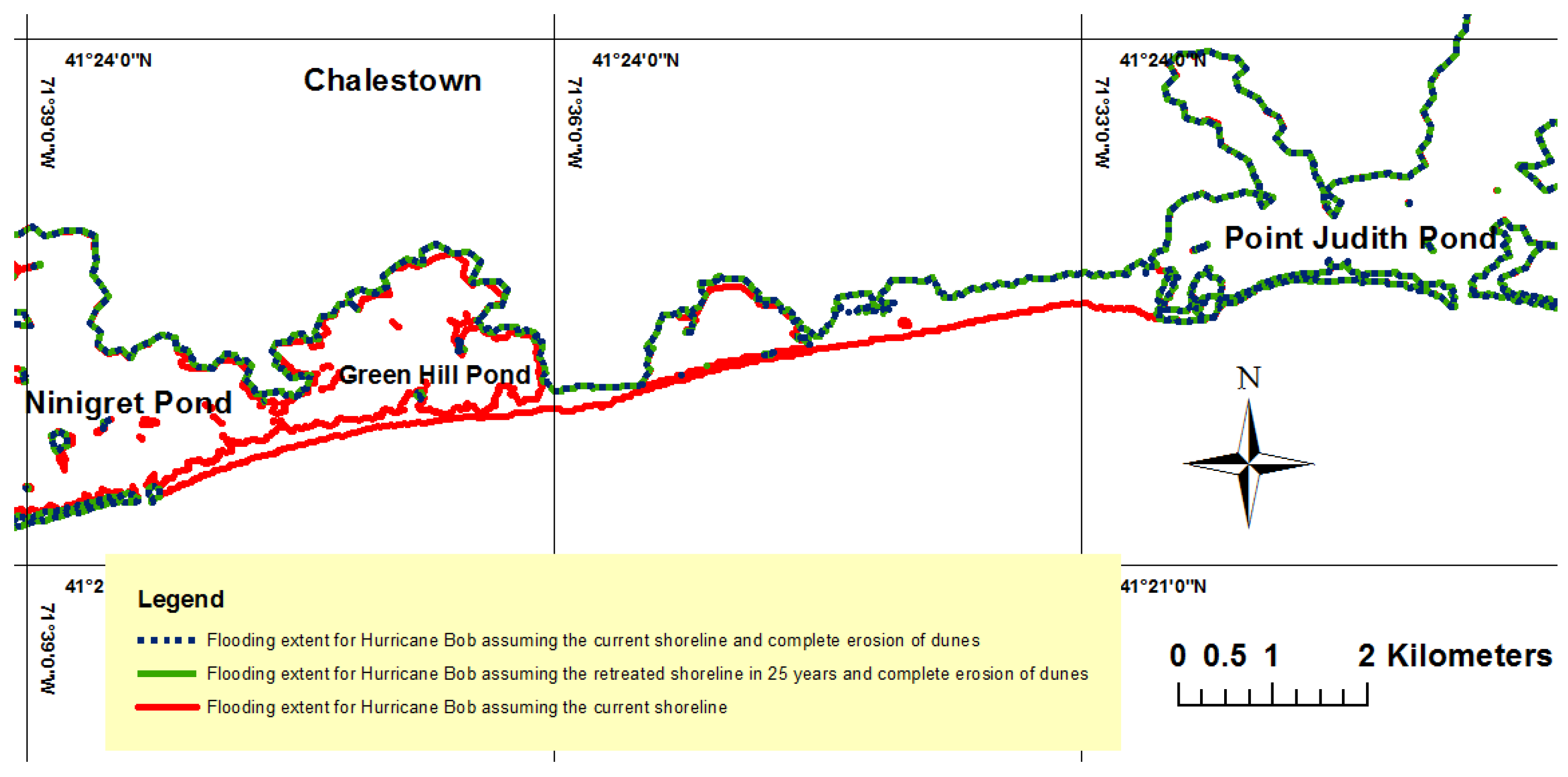
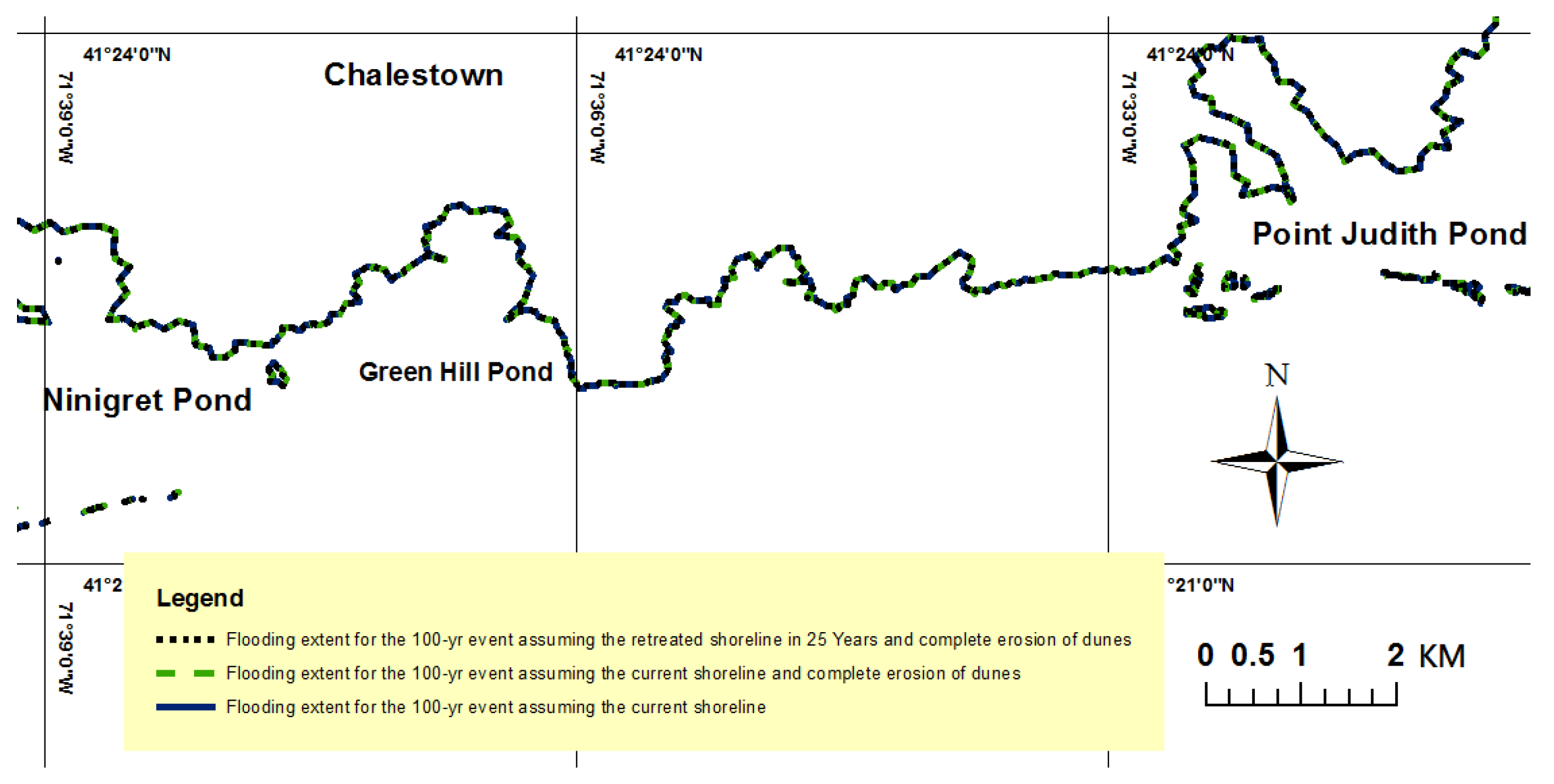
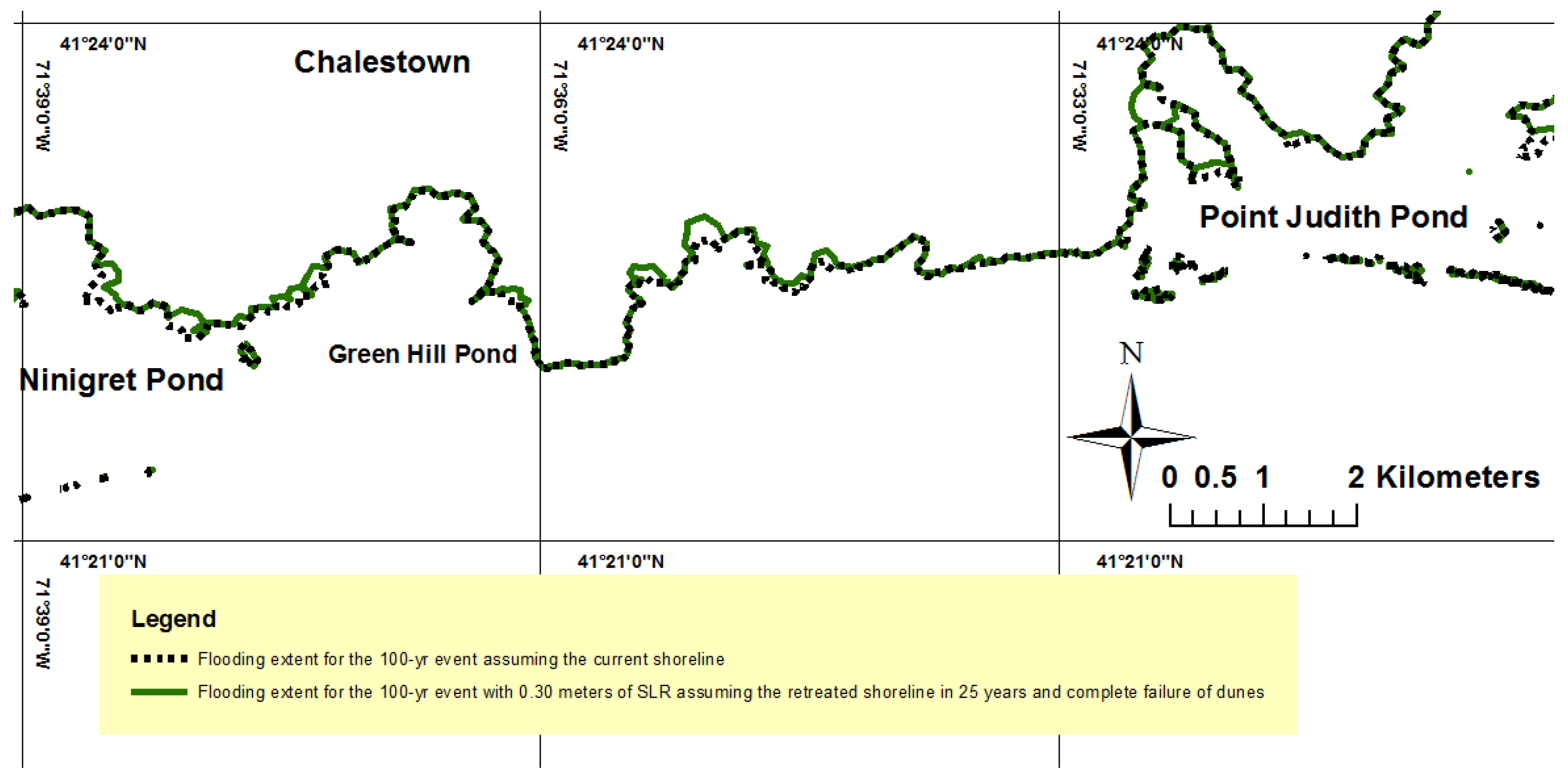

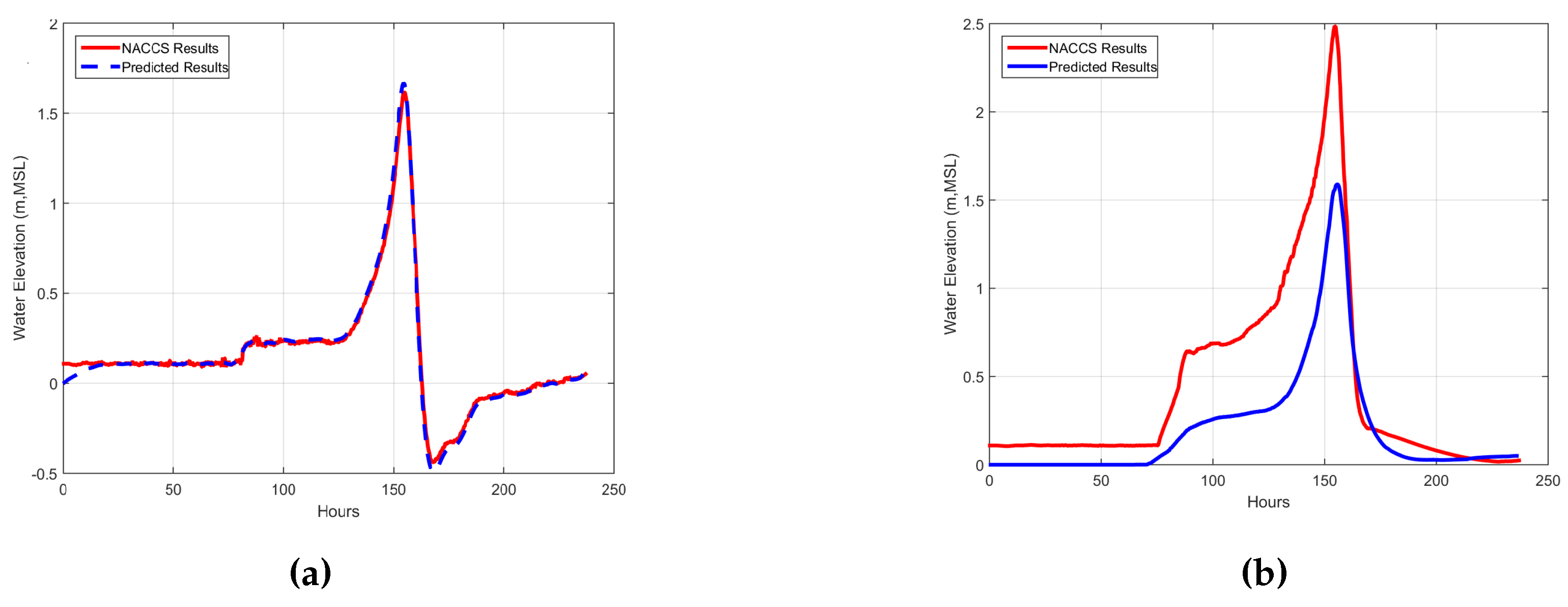
| Harmonics | Newport Amplitude (m) | Newport Phase (degrees) | Providence Amplitude (m) | Providence Phase (degrees) |
|---|---|---|---|---|
| M2 | 0.505 | 2.3 | 0.643 | 9.5 |
| S2 | 0.108 | 25.0 | 0.138 | 33.6 |
| N2 | 0.124 | 345.8 | 0.152 | 354.6 |
| K1 | 0.062 | 166.1 | 0.073 | 169.4 |
| M4 | 0.057 | 35.8 | 0.103 | 202.2 |
| O1 | 0.047 | 202.0 | 0.027 | 312.7 |
| M6 | 0.0005 | 220.1 | 0.027 | 312.7 |
| MK3 | 0.0008 | 19.5 | 0.016 | 39.3 |
| S4 | 0.0007 | 5.1 | 0.014 | 23.8 |
| MN4 | 0.026 | 347.9 | 0.014 | 12.7 |
| Constituents | NW | NN | ||||||
|---|---|---|---|---|---|---|---|---|
| Model | Observation | Model | Observation | |||||
| amp (m) | Phase (deg) | amp (m) | Phase (deg) | amp (m) | Phase (deg) | amp (m) | Phase (deg) | |
| O1 | 0.022 | 277 | 0.018 | 283 | 0.022 | 271 | 0.017 | 277 |
| K1 | 0.024 | 217 | 0.019 | 223 | 0.024 | 210 | 0.019 | 216 |
| N2 | 0.021 | 48 | 0.017 | 71 | 0.020 | 34 | 0.017 | 56 |
| M2 | 0.083 | 82 | 0.081 | 89 | 0.075 | 69 | 0.077 | 75 |
| S2 | 0.008 | 114 | 0.021 | 106 | 0.007 | 98 | 0.021 | 101 |
| Erosion Scenario | Current Flooded Area, km | Changed Flooded Area, km | Difference, km | Percentage Increase |
|---|---|---|---|---|
| Shoreline retreat in 25 years | 1.13 | 1.35 | 0.22 | 19.7% |
| Eroded dunes | 1.13 | 3.5 | 2.33 | 207% |
© 2016 by the authors; licensee MDPI, Basel, Switzerland. This article is an open access article distributed under the terms and conditions of the Creative Commons Attribution license ( http://creativecommons.org/licenses/by/4.0/).
Share and Cite
Shaw, A.; Hashemi, M.R.; Spaulding, M.; Oakley, B.; Baxter, C. Effect of Coastal Erosion on Storm Surge: A Case Study in the Southern Coast of Rhode Island. J. Mar. Sci. Eng. 2016, 4, 85. https://doi.org/10.3390/jmse4040085
Shaw A, Hashemi MR, Spaulding M, Oakley B, Baxter C. Effect of Coastal Erosion on Storm Surge: A Case Study in the Southern Coast of Rhode Island. Journal of Marine Science and Engineering. 2016; 4(4):85. https://doi.org/10.3390/jmse4040085
Chicago/Turabian StyleShaw, Alex, Mohammad Reza Hashemi, Malcolm Spaulding, Bryan Oakley, and Chris Baxter. 2016. "Effect of Coastal Erosion on Storm Surge: A Case Study in the Southern Coast of Rhode Island" Journal of Marine Science and Engineering 4, no. 4: 85. https://doi.org/10.3390/jmse4040085






